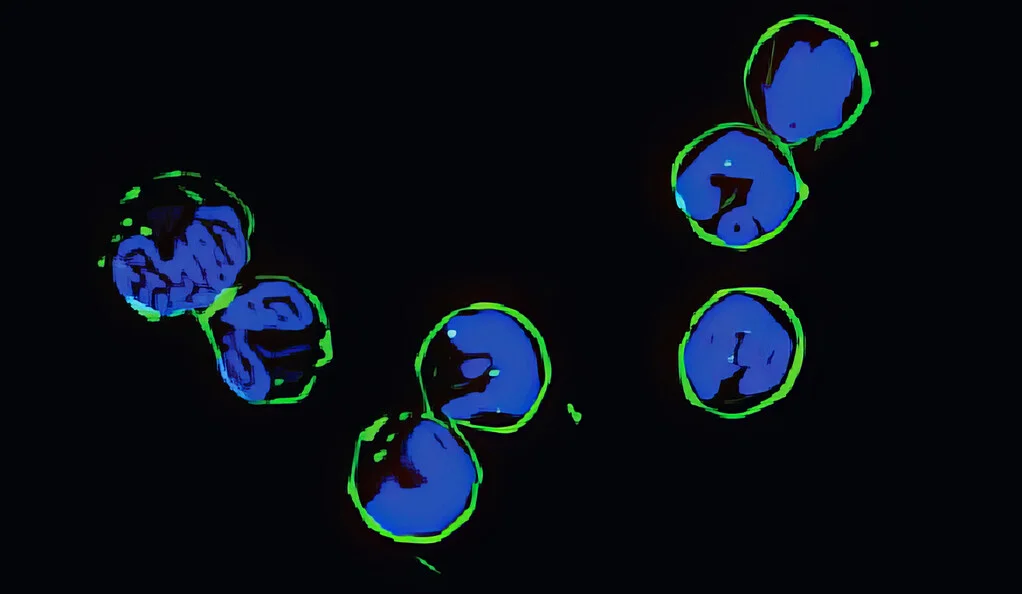In recent times, scientists have encountered RNAs venturing beyond their traditional cellular domains. A study conducted at Yale provides valuable insights into their activities in these unconventional locations.
 Images of RNA on neutrophil cell surface. Green color is RNA whereas blue color is the nucleus. Image Credit: Ningning Zhang
Images of RNA on neutrophil cell surface. Green color is RNA whereas blue color is the nucleus. Image Credit: Ningning Zhang
Nucleic acids (RNAs) are the ultimate insiders when it comes to cells. They carry out a number of vital functions, including directing which genes are activated and transporting genetic instructions from a living organism’s DNA to its machinery for making proteins - a process essential to cellular functions.
Furthermore, the protective boundaries of the cellular membrane serve as the setting for all of these activities.
However, the discovery that RNAs can also be found on the surface of cells, far from the known natural habitat, has shocked scientists in recent years. So what are they doing that is so distasteful for them?
A recent study from Yale indicates that one important role of these extracellular RNAs is to direct neutrophils - a subset of white blood cells - to the sites of inflammation on behalf of the immune system.
Furthermore, scientists believe they may only be beginning to grasp the functions that RNAs in living things play that have hitherto remained unknown.
The findings are published in the journal Cell.
Neutrophils are the firefighters or first responders to infections or injury. We found that without these RNAs on the surface of cells neutrophils can’t reach their destination.”
Jun Lu, Associate Professor and Co-Corresponding Author, Genetics, Yale School of Medicine
Lu says, “It is also likely that these surface RNAs perform other functions which are still unclear. It’s the beginning of a whole new field.”
The Yale research team was also led by Dianqing Wu, the Gladys Phillips Crofoot Professor of Pharmacology at YSM.
Because the neutrophils have glycans, or sugar, in their structure, RNAs on the outside of cells are slightly different from the cousins found inside the cells. The Yale team discovered that first-responder cells lost the ability to react to infections when the team removed cell surface glycoRNAs from the neutrophils in a series of mouse experiments. Additionally, the neutrophils were unable to exit the bloodstream through blood vessel linings.
The precise mechanism by which glycoRNAs are transferred to the cell surface is still being investigated, but Yale researchers discovered that glycoRNAs are derived from RNAs inside the cells. The researchers speculate that normal RNAs within the cells may be repurposed for different purposes on the cell surface.
According to Lu, more research is needed to determine how glycoRNAs affect the immune system function in humans and whether improving it could aid the body in fending off infection or, conversely, whether inhibiting it could aid in the fight against autoimmune diseases.
Source:
Journal reference:
Zhang, N., et al. (2024) Cell surface RNAs control neutrophil recruitment. Cell. doi.org/10.1016/j.cell.2023.12.033